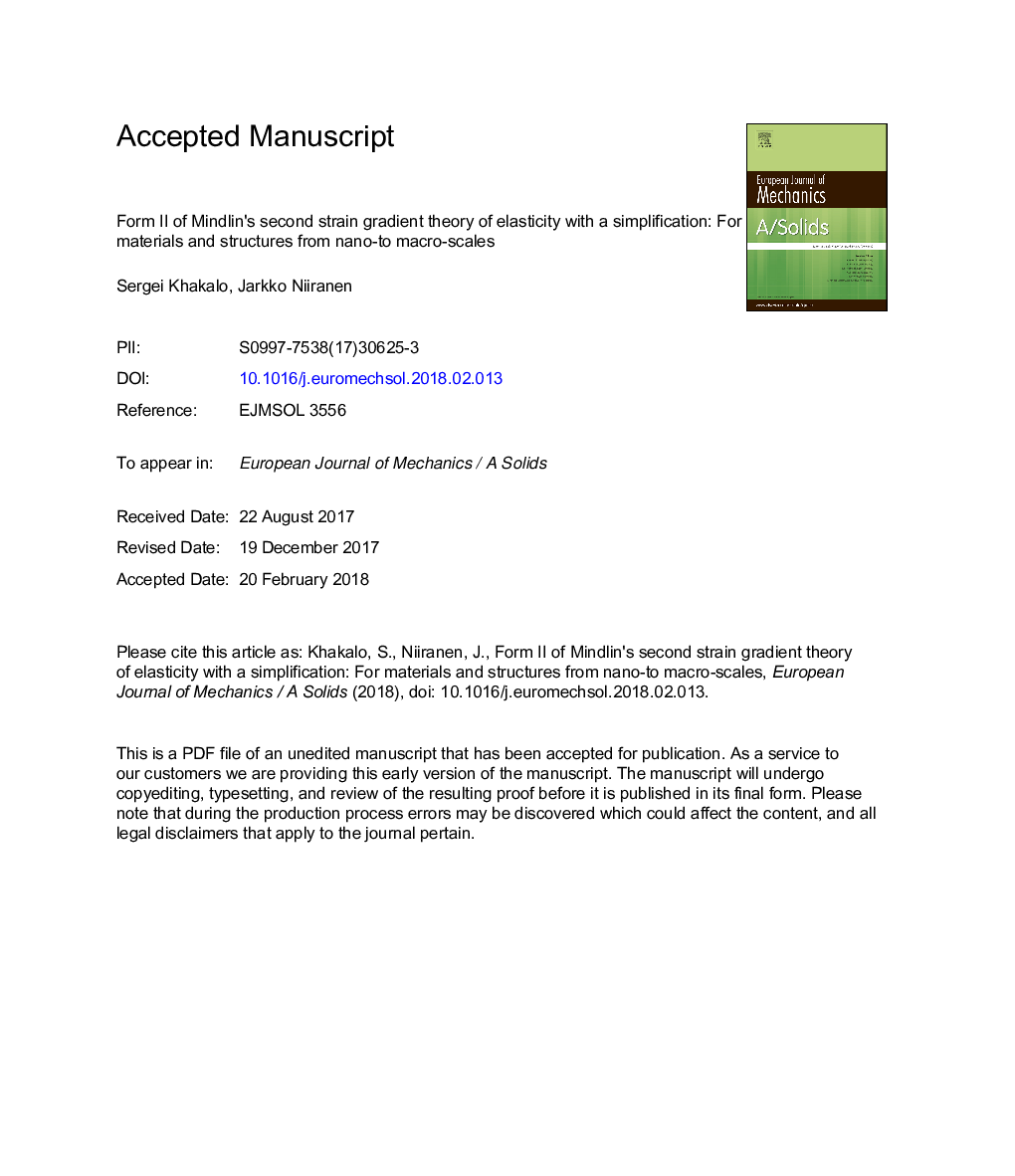| کد مقاله | کد نشریه | سال انتشار | مقاله انگلیسی | نسخه تمام متن |
|---|---|---|---|---|
| 7170149 | 1463176 | 2018 | 47 صفحه PDF | دانلود رایگان |
عنوان انگلیسی مقاله ISI
Form II of Mindlin's second strain gradient theory of elasticity with a simplification: For materials and structures from nano- to macro-scales
دانلود مقاله + سفارش ترجمه
دانلود مقاله ISI انگلیسی
رایگان برای ایرانیان
کلمات کلیدی
Size effects - اثرات اندازهSurface effects - اثرات سطحیStability analysis - تجزیه و تحلیل ثباتDispersion relation - رابطه پاشش، رابطه پاشندگیLattice structures - ساختارهای شبکهNano-structures - ساختارهای نانوMechanical metamaterials - مواد متالوژی مکانیکیArchitectured materials - مواد معماریSurface tension - کشش سطحی
موضوعات مرتبط
مهندسی و علوم پایه
سایر رشته های مهندسی
مهندسی مکانیک
پیش نمایش صفحه اول مقاله

چکیده انگلیسی
The fundamental equations for Form II of Mindlin's second strain gradient elasticity theory for isotropic materials are first derived. A corresponding simplified formulation is then proposed, with six and two higher-order material parameters for the strain and kinetic energy, respectively. This simplified model is still capable of accounting for free surface effects and surface tension arising in second strain gradient continua. Within the simplified model, at first, surface tension effects appearing in nano-scale solids near free boundaries are analyzed. Next, a thin strip under tension and shear is considered and closed-form solutions are provided for analyzing the free surface effects. Expressions for effective Poisson's ratio and effective shear modulus are proposed and found to be size-dependent. Most importantly, for each model problem a stability analysis is accomplished disallowing non-physical solutions (befallen but not exclusively disputed in a recent Form I article). Finally, a triangular macro-scale lattice structure of trusses is shown, as a mechanical metamaterial, to behave as a second strain gradient continuum. In particular, it is shown that initial stresses prescribed on boundaries can be associated to one of the higher-order material parameters, modulus of cohesion, giving rise to surface tension. For completeness, a numerical free vibration eigenvalue analysis is accomplished for both a fine-scale lattice model and the corresponding second-order continuum via standard and isogeometric finite element simulations, respectively, completing the calibration procedure for the higher-order material parameters. The eigenvalue analysis confirms the necessity of the second velocity gradient terms in the kinetic energy density.
ناشر
Database: Elsevier - ScienceDirect (ساینس دایرکت)
Journal: European Journal of Mechanics - A/Solids - Volume 71, SeptemberâOctober 2018, Pages 292-319
Journal: European Journal of Mechanics - A/Solids - Volume 71, SeptemberâOctober 2018, Pages 292-319
نویسندگان
Sergei Khakalo, Jarkko Niiranen,